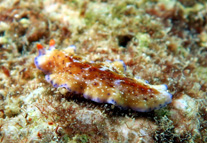Abstract
Note. This original form of this rebuttal was submitted to Science on 3 March 2017 (limited to 300 words as per Science editorial policy) but rejected on 13 March 2017. Herein, we elaborate on our original Science submission in order to more fully address the issue without the length limitations. This rebuttal is followed by the list of the signatories who supported our original submission.
References
Aguiar, J.J.M., Santos, J.C. & Urso-Guimarães, M.V. (2017) On the use of photography in science and taxonomy: how images can provide a basis for their own authentication. Bionomina 12, 44–47.
Ceríaco, L.M.P., Gutiérrez, E.E. & Dubois, A. (2016) Photography-based taxonomy is inadequate, unnecessary, and potentially harmful for biological sciences. Zootaxa, 4196 (3), 435–445.
https://doi.org/10.11646/zootaxa.4196.3.9Christiansen, K.A. & Bernard, E.C. (2008) Critique of the article “Collembola (springtails) (Arthropoda: Hexapoda: Entognatha) found in scrapings from individuals diagnosed with dDelusory parasitosis”. Entomological News, 119, 537–540.
https://doi.org/10.3157/0013-872X-119.5.537Cianferoni, F. & Bartolozzi, L. (2016) Warning: Potential problems for taxonomy on the horizon? Zootaxa, 4139 (1), 128–130.
https://doi.org/10.11646/zootaxa.4139.1.8Dayrat, B. (2005) Towards integrative taxonomy. Biological Journal of the Linnaean Society, 85, 407–415.
https://doi.org/10.1111/j.1095-8312.2005.00503.xDubois, A. & Nemésio, A. (2007) Does nomenclatural availability of nomina of new species or subspecies require the deposition of vouchers in collections? Zootaxa, 1409, 1–22.
d'Udekem d'Acoz, C. & Verheye, M.L. (2017) Epimeria of the Southern Ocean with notes on their relatives (Crustacea, Amphipoda, Eusiroidea). European Journal of Taxonomy. [in press]
Garraffoni, A.R.S. & Freitas, A.V.L. (2017) Photos belong in the taxonomic Code. Science, 355, 805.
https://doi.org/10.1126/science.aam7686International Commission on Zoological Nomenclature (1999) International Code of Zoological Nomenclature. 4th Edition. International Trust for Zoological Nomenclature, London, 306 pp.
Jörger, K.M. & Schrödl, M. (2013) How to describe a cryptic species? Practical challenges of molecular taxonomy. Frontiers in Zoology, 10, 59.
https://doi.org/10.1186/1742-9994-10-59Linsley, E.G. & Usinger, R.L. (1959) Linnaeus and the development of the international code of zoological nomenclature. Systematic Zoology, 8, 39–47.
https://doi.org/10.2307/2411606Lipscomb, D., Platnick, N.I. & Wheeler, Q.D. (2003) The intellectual content of taxonomy: a comment on DNA taxonomy. Trends in Ecology and Evolution, 18, 65–66.
https://doi.org/10.1016/S0169-5347(02)00060-5Löbl, I., Cibois, A. & Bernard, L. (2016) Describing new species in the absence of sampled specimens: a taxonomist’s own-goal. Bulletin of Zoological Nomenclature, 73, 83–86.
https://doi.org/10.21805/bzn.v73i1.a2Markle, D.F. (1997) Audubon’s hoax: Ohio River fishes described by Rafinesque. Archives of Natural History, 24, 439–447.
https://doi.org/10.3366/anh.1997.24.3.439Marshall, S.A. & Evenhuis, N.L. (2015) New species without dead bodies: a case for photo-based descriptions, illustrated by a striking new species of Marleyimyia Hesse (Diptera, Bombyliidae) from South Africa. ZooKeys, 525, 117–127.
https://doi.org/10.3897/zookeys.525.6143McNutt, M. (2014) Retraction. Science, 344, 981.
https://doi.org/10.1126/science.344.6187.981-aOrrico, V.G.D. (2017) Photography-based taxonomy is still really inadequate, unnecessary, and potentially harmful for biological sciences. A reply to Thorpe (2017). Bionomina, 12, 47–51.
Rafinesque, C.S. (1818) Further discoveries in natural history made during a journey through the western region of the United States. American monthly magazine and critical review, 3, 445–447.
Rafinesque, C.S. (1820) Ichthyologia Ohiensis or, natural history of the fishes inhabiting the river Ohio and its tributary streams, preceded by a physical description of the Ohio and its branches. Lexington, Kentucky, 90 pp.
https://doi.org/10.5962/bhl.title.6892Rocha, L.A., Aleixo, A., Allen, G., Almeda, F., Baldwin, C.C., Barclay, M.V.L., Bates, J.M., Bauer, A.M., Benzoni, F., Berns, C.M., Berumen, M.L., Blackburn, D.C., Blum, S., Bolaños, F., Bowie, R.C.K. Britz, R., Brown, R.M., Cadena, C.D., Carpenter, K., Ceríaco, L.M., Chakrabarty, P., Chaves, G., Choat, J.H., Clements, K.D., Collette, B.B., Collins, A., Coyne, J., Cracraft, J., Daniel, T., de Carvalho, M.R., de Queiroz, K., Di Dario, F. Drewes, R., Dumbacher, J.P., Engilis Jr., A., Erdmann, M.V., Eschmeyer, W., Feldman, C.R., Fisher, B.L., Fjeldså, J., Fritsch, P.W., Fuchs, J., Getahun, A., Gill, A., Gomon, M., Gosliner, T., Graves, G.R., Griswold, C.E., Guralnick, R., Hartel, K., Helgen, K.M., Ho, H., Iskandar, D.T., Iwamoto, T., Jaafar, Z., James, H.F., Johnson, D., Kavanaugh, D., Knowlton, N., Lacey, E., Larson, H.K., Last, P., Leis, J.M., Lessios, H., Liebherr, J., Lowman, M., Mahler, D.L., Mamonekene, V., Matsuura, K., Mayer, G.C., Mays Jr., H., McCosker, J., McDiarmid, R.W., McGuire, J., Miller, M.J., Mooi, R., Mooi, R.D., Moritz, C., Myers, P., Nachman, M.W., Nussbaum, R.A., Ó Foighil, D., Parenti, L.R., Parham, J.F., Paul, E., Paulay, G., Pérez-Emán, J., Pérez-Matus, A., Poe, S., Pogonoski, J., Rabosky, D.L., Randall, J.E., Reimer, J.D., Robertson, D.R., Rödel, M.-O, Rodrigues, M.T., Roopnarine, P., Rüber, L., Ryan, M.J., Sheldon, F., Shinohara, G., Short, A., Simison, W.B., Smith-Vaniz, W.F., Springer, V.G., Stiassny, M., Tello, J.G., Thompson, C.W., Trnski, T., Tucker, P., Valqui, T., Vecchione, M., Verheyen, E., Wainwright, P.C., Wheeler, T.A., White, W.T., Will, K., Williams, J.T., Williams, G., Wilson, E.O., Winker, K., Winterbottom, R. & Witt, C.C. (2014) Specimen collection: An essential tool. Science, 344, 814–815.
https://doi.org/10.1126/science.344.6186.814Shelomi, M. (2013) Evidence of photo manipulation in a delusional parasitosis paper. Journal of Parasitology, 99, 583–585.
https://doi.org/10.1645/12-12.1Thorpe, S.E. (2017) Is photography-based taxonomy really inadequate, unnecessary, and potentially harmful for biological sciences? A reply to Ceríaco et al. (2016). Zootaxa, 4226 (3), 449–450.
https://doi.org/10.11646/zootaxa.4226.3.9Wheeler, Q.D. (2004) Taxonomic triage and the poverty of phylogeny. Philosophical Transactions of the Royal Society B, 359, 571–583.
https://doi.org/10.1098/rstb.2003.1452Will, K.W. & Rubinoff, D. (2004) Myth of the molecule: DNA barcodes for species cannot replace morphology for identification and classification. Cladistics 20, 47–55.
https://doi.org/10.1111/j.1096-0031.2003.00008.xWill, K.W., Mishler, B.D. & Wheeler, Q.D. (2005) The perils of DNA barcoding and the need for integrative taxonomy. Systematic Biology 54, 844–851.
https://doi.org/10.1080/10635150500354878Woodman, N. (2016) Pranked by Audubon: Constantine S. Rafinesque’s description of John James Audubon’s imaginary Kentucky mammals. Archives of Natural History, 43, 95–108.
https://doi.org/10.3366/anh.2016.0349

